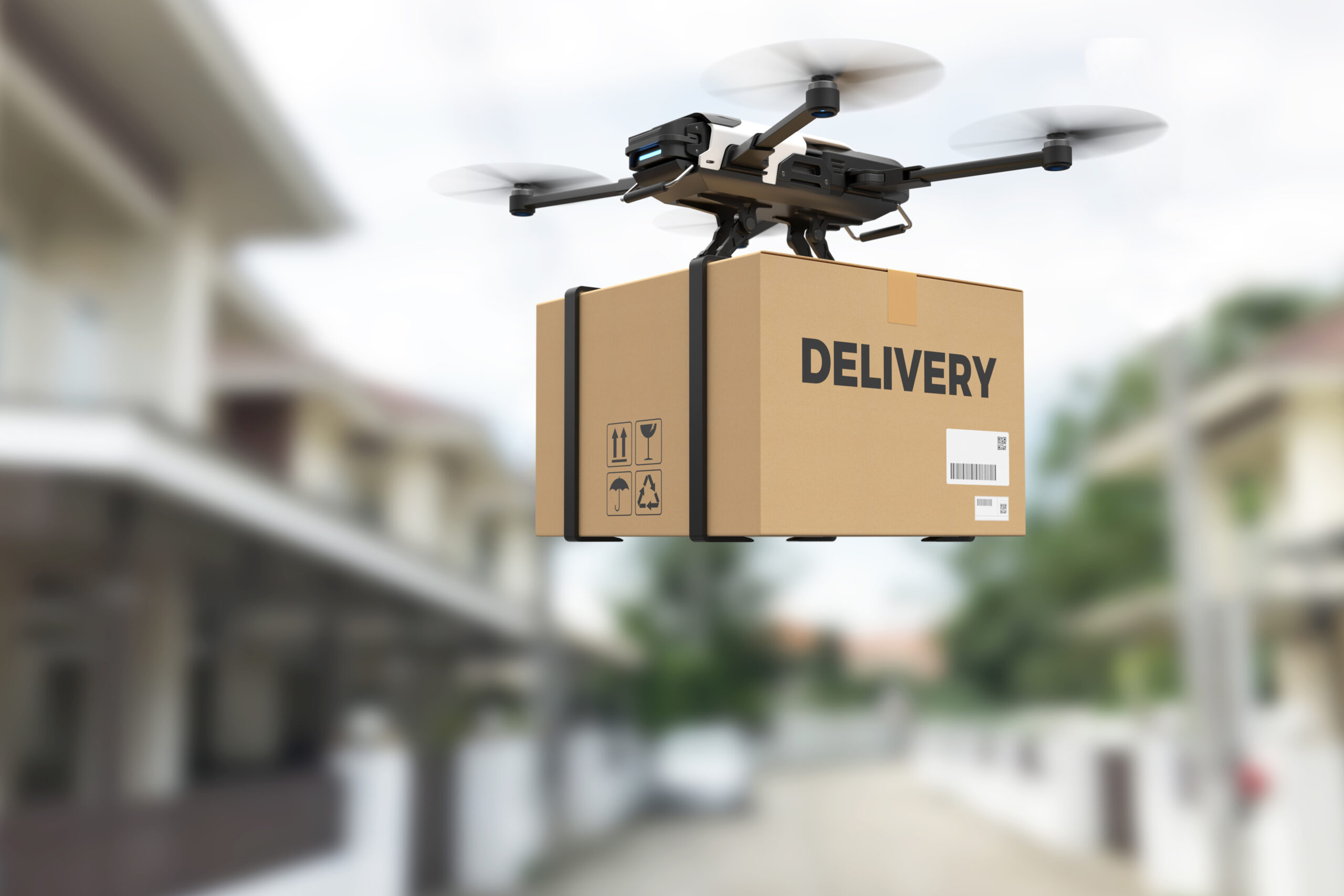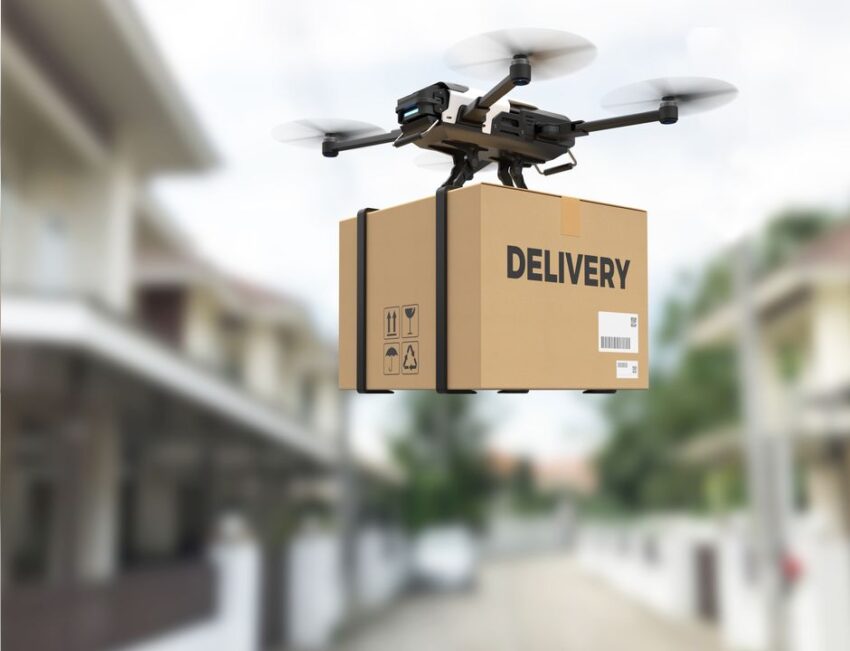Delivery drones are poised to become a vital element in both the transportation logistics industry and the e-commerce sector. With the emergence of delivery drones, the prospect of instant order deliveries through drone technology is on the brink of becoming a reality. Over the past three years, there have been more than 660,000 commercial drone deliveries, and in 2022, an average of 2,000 drone deliveries occurred daily. The global market for cargo drones is projected to reach $10,580.2 million USD in 2023, and it is anticipated to experience a robust growth rate with a Compound Annual Growth Rate (CAGR) of 14.6%. By the end of the year, it is expected to surge to a remarkable $41,337.1 million USD.

The utilization of cargo drones is set to witness continued growth within the logistics industry.
In the previous year, we have seen numerous companies collaborating with drone manufacturers to explore the potential of instant delivery services. Walmart, for instance, joined forces with DroneUp to enhance its drone delivery initiative, enabling access to millions of customers. Meanwhile, the drone delivery company Flytrex collaborated with several food chains to facilitate instant food deliveries across the United States. Interestingly, even governments in Europe and Asia have initiated experiments with drone delivery services.
Nevertheless, when we think of instant cargo delivery via drones, we tend to think about multinational giants like DHL, UPS, or Amazon. However, this perception might undergo a transformation in the coming years. An increasing number of mid-sized companies are now expanding their drone operations, potentially challenging the monopoly of multinationals in the transportation and logistics industry when it comes to drone deliveries.
Online retailers are keen on achieving swift and cost-effective deliveries to their customers by harnessing drones equipped with sensors, cameras, GPS, and other advanced features. Despite significant advancements in the drone delivery sector, it faces two significant challenges: the looming threat of an economic recession and sustainability concerns.
The United States will maintain its prominent position as a leader in the drone delivery sector.
To start, the USA stands as a dominant force in the drone delivery industry. With a multitude of e-commerce giants and technology startups headquartered across various states, it’s no surprise that the US leads the world in drone delivery adoption. Projections indicate that the drone market in North America is predicted to grow by more than 12% in the next five years. Additionally, the Federal Aviation Administration (FAA) has extended several grants that have not only increased demand for drones but also incentivized companies to invest in cargo drone technology.
The COVID-19 pandemic played a pivotal role in driving demand for delivery drones. Nationwide lockdowns and social distancing measures presented a significant opportunity for the drone delivery sector. Drones, with their ability to facilitate contactless deliveries within remarkably short timeframes, demonstrated their value at a time when there was a high demand for goods but a shortage of human delivery personnel. During the pandemic, the FAA expedited the approval of drone delivery services in the USA, allowing for the rapid delivery of essential items such as medicines and food. For instance, Zipline partnered with Novant Health to employ drones for delivering personal protective equipment (PPE) from a medical facility to a storage location.
Other countries are not lagging behind
Furthermore, Canada is increasingly embracing drone delivery technologies to enhance its delivery processes. In Asia, China and Japan lead the way in this sector, while in Europe, countries like Switzerland, Iceland, and Finland are utilizing drones for delivering pharmaceuticals and retail items to remote areas. African nations like Ghana and Rwanda are utilizing drones to transport test samples and medical supplies. In India, the drone delivery sector has received support from the authorities, with the government launching an initiative to transform the country into a drone hub by 2030.
Drone delivery trends in the transportation and logistics industry for 2023
Cargo drone manufacturers are seeking to enhance the drones in 2023 to withstand harsher weather conditions, accommodate heavier loads and yield a longer delivery range. Moreover, authorities across the world are continuing to support drone companies allowing them to safely integrate into the airspace of the respective countries.
Dronamics– the world’s first cargo drone company has received a 2.5 million Euro grant from the European Innovation Council (EIC) to support their research and development programme that will help them accelerate the roll-out of their cargo drone mobility solution. The objective of Dronamics is to create sustainable and affordable same-day delivery solutions for businesses across Europe, especially in isolated and under-served areas.
As the world’s first cargo drone company, they are developing long-range drones meant specifically for cargo. Their flagship drone Black Swan can carry up to 350 Kg of cargo for a distance of 2.500 Km at a cost that is 50% cheaper than conventional air freight. Moreover, their drone technology also results in 60% less carbon emission than air cargo. Dronamics is also IATA’s strategic partner for drones worldwide.
Walmart’s drone operation unit called DroneUp is expanding its delivery network across 34 sites to have the potential to reach four million households across six states in the USA. They presently have the ability to deliver one million parcels by drone annually. Some of the other key players in the drone delivery market include Drone Delivery Canada, Airbus, Matternet, DHL, SF Express, and Rakuten Group INC.
In Conclusion
The adoption of cargo drones for delivery is poised to proliferate within the transportation and logistics sector. Over the next few years, industries spanning various sectors will increasingly harness this technology to drive innovation in areas like delivery, research, and surveillance. It’s evident that in 2023, e-commerce enterprises will remain at the forefront of drone deliveries, while logistics companies will concurrently develop drone delivery solutions to facilitate seamless last-mile deliveries and elevate the overall user experience.


